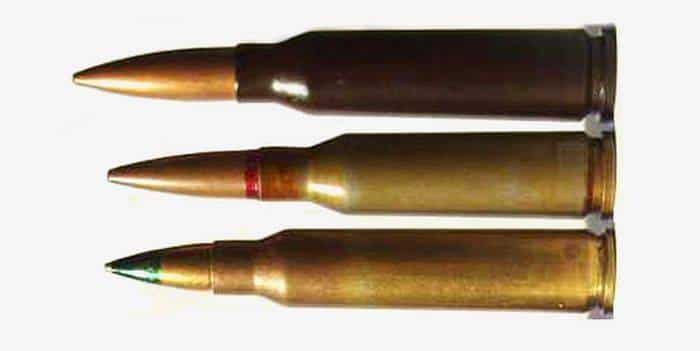In 1995, the forces of the People's Liberation Army began to receive a new assault rifle, the QBZ-95, a model which brought two major developments to Chinese small arms. The first was at the level of the 2 mm x 5,8 ammunition, a new exclusively Chinese caliber, designed to compete with the 42 x 5,56 NATO and the Russian 45 x 5,45. Like the two Western and Russian calibers, the 39 x 5,8 was designed to reduce recoil when firing, particularly compared to the 42mm caliber in service until then, and therefore make aiming easier, particularly in shooting rafale. With a 4,15 g steel projectile, and an energy release of 1900 joules, the Chinese ammunition has performances very similar to that of NATO, even if the Chinese authorities assure that it is more precise and effective at medium range, and that it deploys superior stopping power.
The second innovation of the QBZ-95 was its design itself, which took a so-called “Bullpup” or compact architecture, with the magazine and combustion chamber being moved to the rear of the rifle and sights. Like the French Famas or the British L85, this architecture makes it possible to design small light weapons, but retaining the barrel length of an assault rifle or carbine, such as the M16 or M4.

But in China too, the limitations of the Bullpup eventually no longer outweighed its advantages. In particular, the cannon is now often adorned with additional sights or various accessories such as a grenade launcher, a laser sight, a micro-camera, whereas these additions are difficult or even impossible on a Bullpup. With the arrival of new lighter and more resistant materials, this architecture now seems to no longer have the upper hand over standard architecture. And, like France which decided to replace its FAMAS with German HK416s, the Chinese forces decided to replace their QBZ-95 with a new model, the QBZ-191, appeared publicly during the military parade for the 70th anniversary of the creation of the People's Republic of China.
Classic in design, the QBZ-191 comes in 2 models, the carbine equipped with a 267 mm (10,5 inch) barrel, and the assault rifle, with a 368 mm (14,5 inch) barrel . An accessory rail runs the length of the barrel, and a removable handle can be deployed in 4 positions. The thumb fire selector allows you to switch from single shot to automatic fire, given to reach 750 rounds per minute. As on the QBZ-95, there is no “3 by 3” firing mode, the PLA not considering this option as useful. The QBZ-191 retains the 5,8 x 42 caliber of its predecessor, and can also use its magazines. It is given to have a range of 600 m, and great precision up to 300m, thanks to a sighting optic comparable to the “red dot” widely used by NATO.

The QBZ-191 appears to be intended to be available in several versions, ranging from assault rifle to light machine gun, carbine and sniper rifle. A new ammunition, of the same caliber but more powerful than the 5,8 x 42, would be being manufactured, to achieve a greater range for the machine gun and the precision rifle. However, as with the NATO 5,56 x 45, we can question the effectiveness of this ammunition in the face of ballistic protection which is becoming more and more widespread. In this context, the choice of the US Army and the Marine Corps, with the NGSW R/AR programs and the 1186mm XM6,8 ammunition, seems judicious, even if it requires profound breaks with the existing system.
